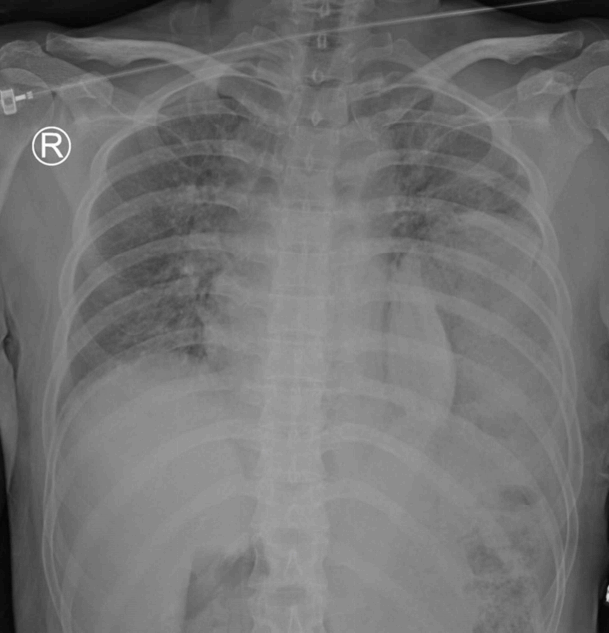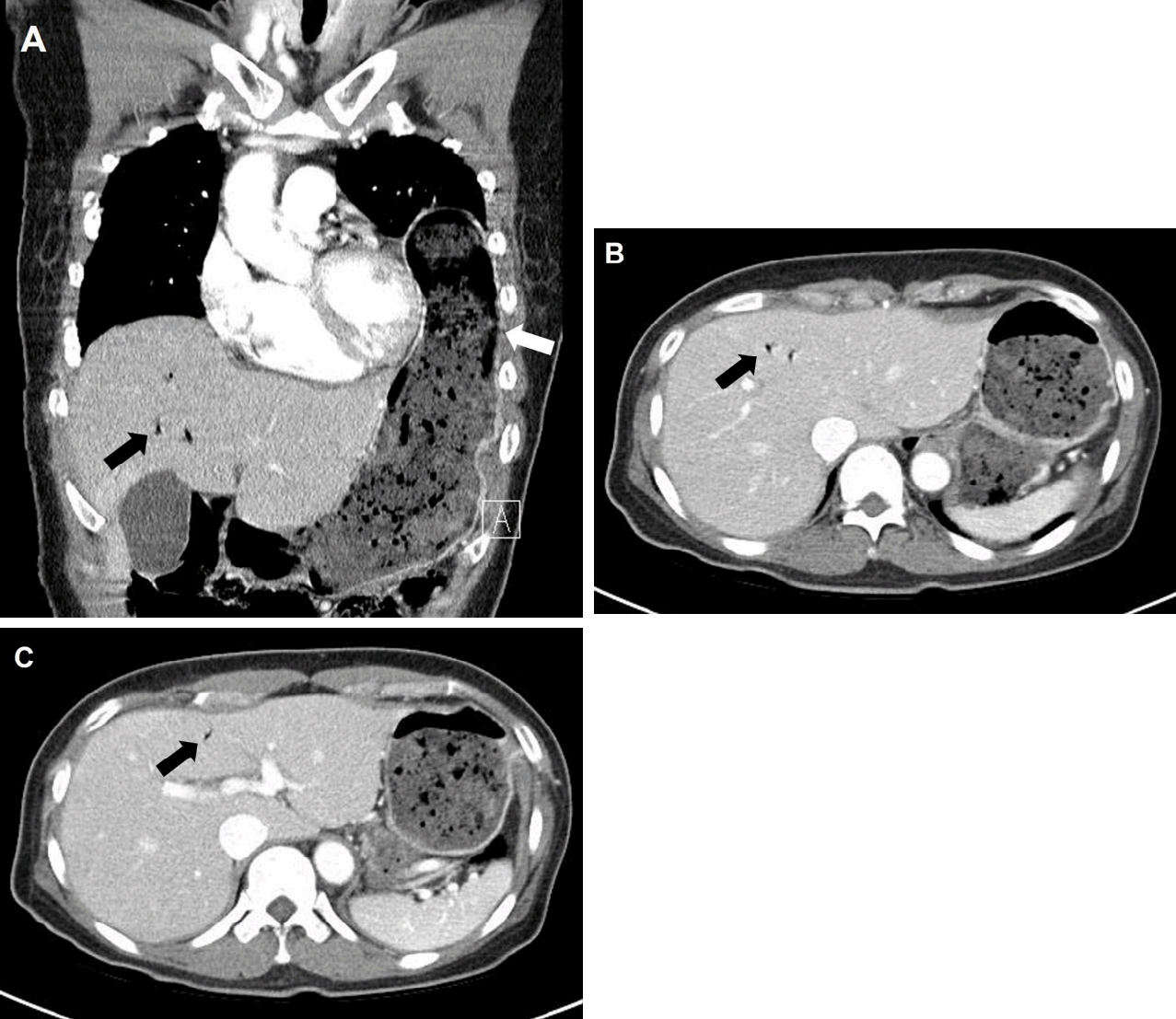Pneumobilia with Diaphragmatic Rupture Following Blunt Trauma
Article information
Abstract
Pneumobilia is the presence of gas in the biliary tree, mostly caused by biliary-enteric surgical anastomosis or a biliary intervention. Pneumobilia following abdominal trauma is extremely rare. Here we report pneumobilia accompanied with left diaphragmatic rupture following blunt trauma in a 57-year-old woman involved in a motor vehicle accident.
CASE
A 57-year-old woman sustained blunt trauma from a traffic accident and had abdominal pain with dyspnea. A supine chest X-ray showed soft tissue density in the left chest (Fig. 1). A chest computed tomography (CT) scan revealed a left diaphragmatic rupture with the stomach herniated into left pleural cavity and air in the biliary tree (Fig. 2A). An abdominal CT scan revealed the air distributed through the biliary tree corresponded to couinaud segment IV (Fig. 2B and 2C). She had not undergone a biliary surgery or biliary intervention. On arrival, she did not have a small bowel obstruction and did not present any infection-related symptoms or signs. She discharged without any further evaluation with the management of pneumobilia in postoperative day 12, after emergency laparotomy with hernia reduction of the stomach and primary repair of left diaphragm.

A supine chest radiography showed the soft tissue density suggesting diaphragmatic hernia in the left lower chest.
DISCUSSION
Pneumobilia is defined as the presence of gas in the biliary system. The most causes of pneumobilia are biliary surgery, a biliary intervention such as endoscopic retrograde cholangiopancreatography, gallstone disease, or biliary-enteric fistula [1]. Pneumobilia is a rare radiographic finding after blunt trauma to the abdomen. The diagnosis of pneumobilia reported most were confirmed by a CT scan [2-5], as is the case herein. High impact pressure of blunt trauma is thought to force gas from the duodenum through the sphincter of Oddi and into the biliary system, resulting in diaphragmatic rupture. Although pneumobilia with additional clinical findings may necessitate further evaluation, in the absence of any evidence of infection it seems to be a self-limited condition which can be managed conservatively without operation [2-5].
Notes
Conflict of Interest Statement
None of authors have a conflict of interest.
